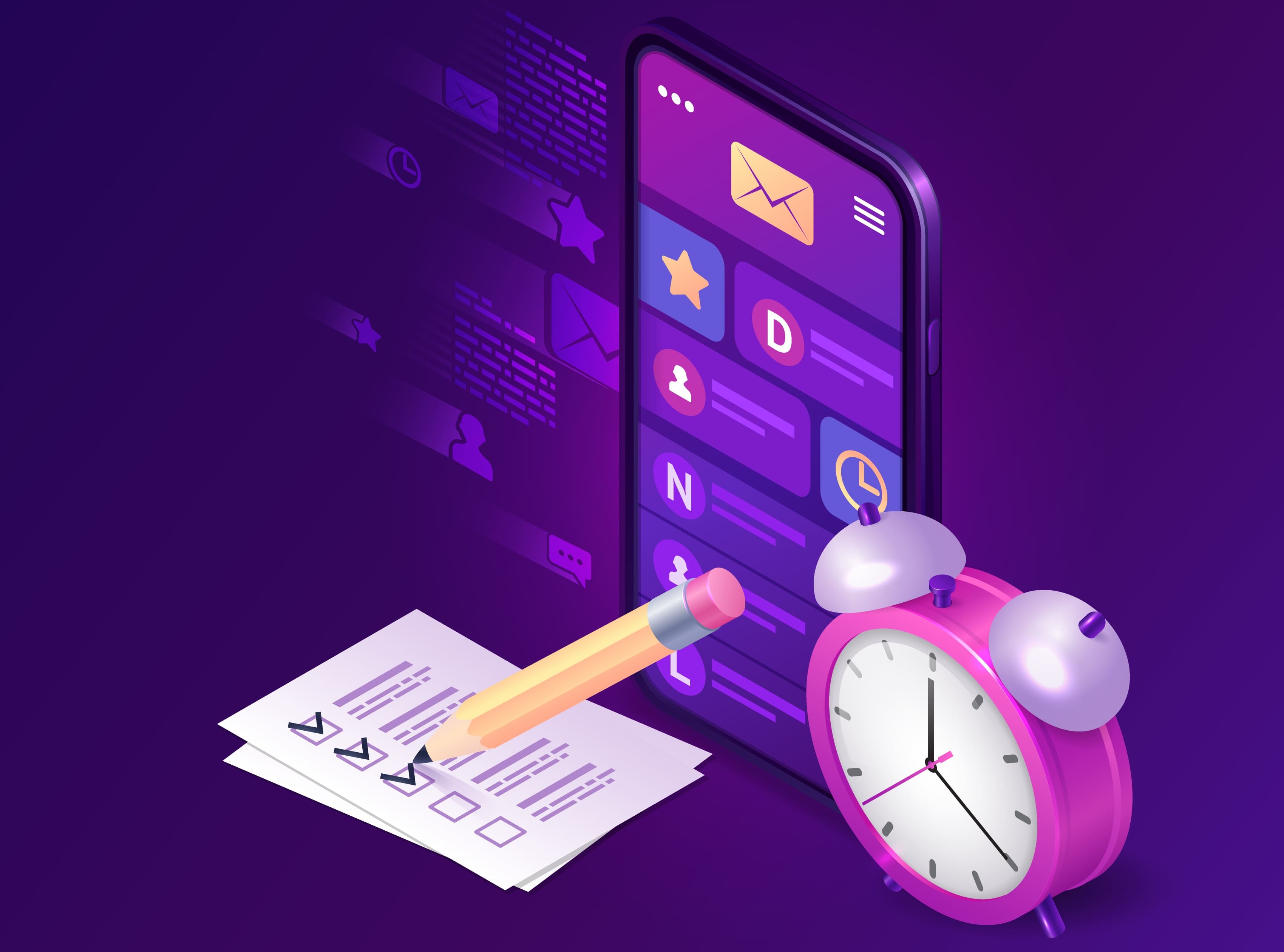What is product requirement document and its benefits
A product requirement document is a key document for any software project including mobile apps. When you are planning to build a mobile app, you should create a mobile app requirement document. This document outlines the business objectives, technical specifications, and non-technical requirements. This document is used by your business team, product development team, and marketing team to design, develop and deploy the right mobile app.
Various Components of a Product Requirement Document:
Any product requirement document addresses three main questions:
Why?
Why the product is needed, and what problem does it solves.
Who?
Who will use the product? Defining the user profiles is very important.
How?
How would intended users use the product? What types of products (Hardware or software) will be built. How should the system react to the user’s requirement?
To address these key questions a product requirement document for a mobile app ( or any software) consists of three main components:
| S.no. | Requirements | Description |
|---|---|---|
| 1. | Business Requirement (Why?) |
Business requirements define the business objective of the app, what problems it solves and what is the business model of the app. This section helps investors, sponsors, product managers and marketing teams to understand the overall value proposition of the mobile app. |
| 2. | User Requirements (Who?) |
User requirement defines various users of the application, user journeys and user experiences. User requirements also define product champions and the decision makers for the user requirements. |
| 3. | System Requirements (How?) |
System Requirement, it is also referred to as software requirement specifications, defines the functionality, performance and other requirements of the app. System requirements are used by the technical team to develop the application and the related infrastructure. These requirements are categories in two separate groups |
For every component, you club requirements in two groups
1. Functional Requirement
Any requirement that defines the functionality of the app, and how the app would function.
2. Non Functional Requirement
Any requirement that is not related to the functionality of the app, are requirements that define the performance, usability, scalability, security, and integration of the app.
Functional and nonfunctional requirements become very crucial during the User requirement and System requirements.
Mobile App FRD Template
If you would like to download the word format of the Mobile App FRD, you can download it from here.
Strategy
Design
Development
Support
How to Define Business Requirements
While writing business requirements for your mobile app, you should focus on why the mobile app should be built, what changes and impact it will bring to your users, and how you can make money from the app.
A business requirement section should have the following structure
| Sections | Description |
|---|---|
| The Problem | You should define the problem that you are trying to solve. You should state how you learned about the problem, what is the scale of the problem, and any other research you have done. |
| The Solution | You should define the solution that you are trying to build and how it addresses the problem. For example, if you are trying to build a taxi booking app, you should state how a taxi booking app solves the problem of getting taxis on-demand and cost-effectively. |
| The Competition | The world is full of innovative people. Don’t assume that there is no competition without doing enough research. You should do thorough research to see if any other apps solve this problem. If there are apps, you should define their pros and cons. |
| Monetization | No one can imagine building a product and not making money out of it. You need to come up with a monetization plan for your app. You should define how you want to make money from the app: Subscription model, in-app purchase, one-time download, ads, or making money from the data. |
| Stakeholder | You should define all the stakeholders of the app; that includes the idea owner, the promoters, investors, sponsors, or any other person who would be investing time and money in building the app. |
| Business Risks | Every business plan has risks, your mobile app also would have some risks. You should identify them in the beginning and point them out. This can help your team to understand the risks and maybe come up with a plan to avoid them. |
| Assumptions and dependencies | Your business plan will have some assumptions and dependencies. You might make assumptions like how many paid and non-paid users you will have at the end of the year. Your mobile app may depend upon several third-party software, i.e. you may use Stripe for making payments or Twilio for making calls. You want to define these dependencies as these systems might affect your cost or functionality. |
| Scope and High-Level Features | You should define the high-level scope of your project. You should define if you want an iOS App, or Android App, or Web App, or all of them. At this stage, considering your mobile app development approach can help you align features with the right platforms. Do you want to build a marketing website for your mobile app? What would be your social media presence? You should define high-level features of the app as well. |
| Define various phases | When you build an app product, you don’t want to build all the features and interfaces in one phase. This is done to save time and money for the initial launch. You should define what features you are planning to launch in the first phase and what would be launched in subsequent phases. |
How to Define User Requirements
You have defined business requirements, you have accomplished your first step, and now it is time to define your user requirements. For you to define user requirements, you will have to understand the types of users, how they will interact with your app and what are their expectations from the app. There are three main components of defining user requirements:
- Define the user types
- Define functional requirement
- Define non-functional requirements
1. Defining the user types
Your app can have various types of users who will interact with the app. For example, if you are building a taxi booking app, you will have a customer user, a driver user, an admin user, and a super admin user. You should define in detail the demography of the users and what they would be doing in the app.
An example of user type for a taxi booking app.
| User Profiles | Roles and Responsibility |
|---|---|
| Customer | A customer will download the mobile app on iPhones and Android, able to create their profile and order taxi services. The customer’s age can be from 15-70 years old, the customer will be based in America, and they can be a primary English speaker with Spanish as a second language. |
| Driver | A driver would be setting up the profile in the app, seeing the request from customers, responding to the request, and completing the trip from one location to another, Drivers will be from age 18 to 70, and primary English speakers. They have to have a license. |
| Company Admin User | The company admin is a taxi company manager who will add the drivers to the app. The company admin will only access a web interface to manage the driver’s data and reports. Company admin can also see how many requests drivers are responding to and how much money drivers have earned. They can also see several reports. |
| Super Admin | A super admin will access a super admin web interface. This super admin is the product owner who can see all the data related to companies, drivers, and customers. |
2. Define functional requirement
Functional requirements define all the detailed functionality of the application with various use cases and business rules.
Following are the main parts of a functional requirement document
| Requirements | Description |
|---|---|
| Functional Component | A mobile app will have multiple functional components. For example, for a taxi booking app, you can have various functional components for a customer: user profile, add a service request, make payments, transaction history. |
| Functional requirement | Every functional component has functional requirements. For example, user profiles have requirements like the ability to log in, signup, forgot passwords, and add profile data like name, pictures, and contact information. |
| Business rule | Every functional requirement will have a business rule. For example, for login requirements, your business rules are that the user logs in with the phone no and password. |
3. Defining Non-Functional Requirements
Non-Functional requirements cover the system performance, security, usability and safety, SDLC process, and type of programming languages used.
| Requirements | Description |
|---|---|
| Performance parameters | How much time it should take for users to download the app, create the account, and order a ride. Make the payments. |
| Safety | How can one user block another user, how can content be flagged in the system? |
| Technology | Would we use the native app development approach or cross-platform approach to build the app? Would we use a cloud backend like AWS or Azure for the database? |
How to define system requirements (Software Requirement Specifications)
You have involved clients, business leaders, users, project managers, and business analysts to capture the business requirement and user requirements. However, you can not build software without involving developers. Once you have written business requirements and user requirements, you need to bring the technical team into the discussion, they will review these documents and a BA will write system requirements.
| Requirements | Description |
|---|---|
| Define functional requirement | You had written functional requirements during user requirements. Now with the help of developers, you will take each requirement, assign a number to it and define further details, short description, rationale, associated risks, and status. |
| Non-Functional Requirement | The technical team will further define the non-functional requirements like security, scalability, and performance. |
| Constraints | Define all the system constraints |
| External Interfaces | You might integrate your app with external systems |
To know more about mobile app development read our blog : Mobile App Development Checklist to Create Quality Product

 App Development
App Development Web Engineering
Web Engineering AI Services
AI Services Startups
Startups Health / Fitness
Health / Fitness Education
Education Social
Social Nonprofit
Nonprofit Fintech
Fintech Logistics
Logistics Government
Government HR Software
HR Software About Simpalm
About Simpalm Our News
Our News Client Testimonials
Client Testimonials Careers
Careers Awards
Awards Resources
Resources Information
Information


